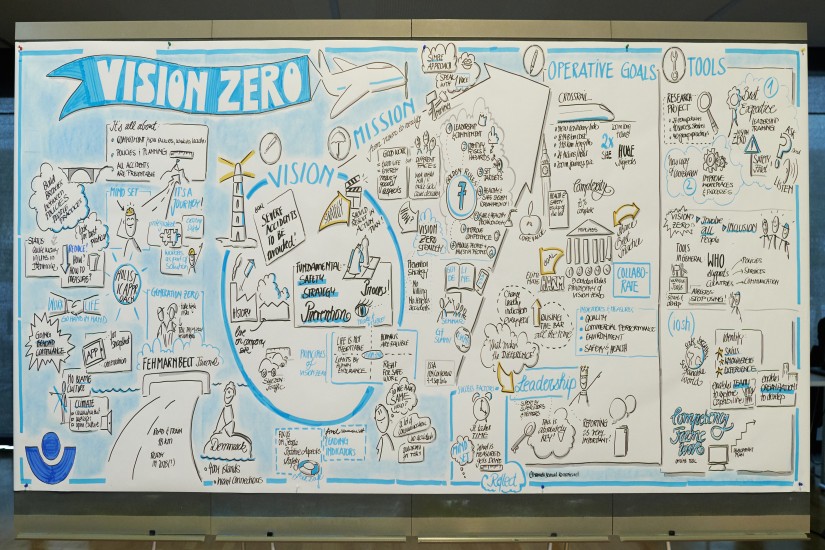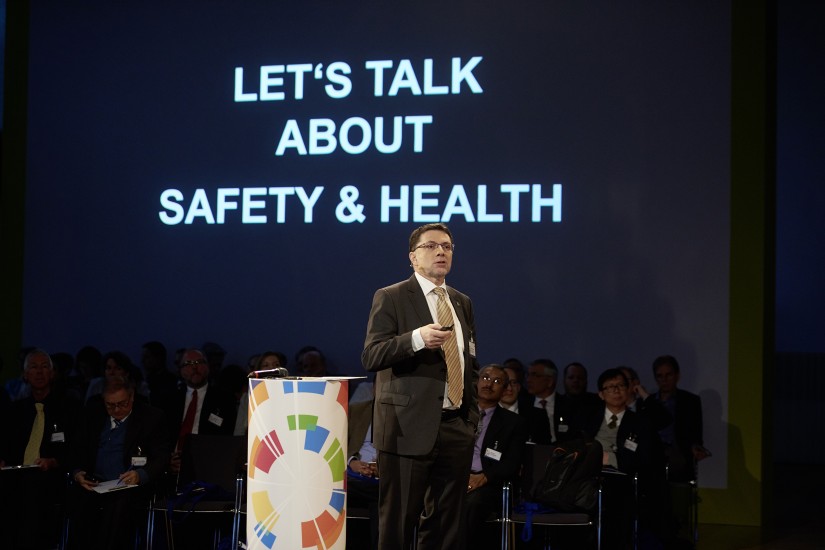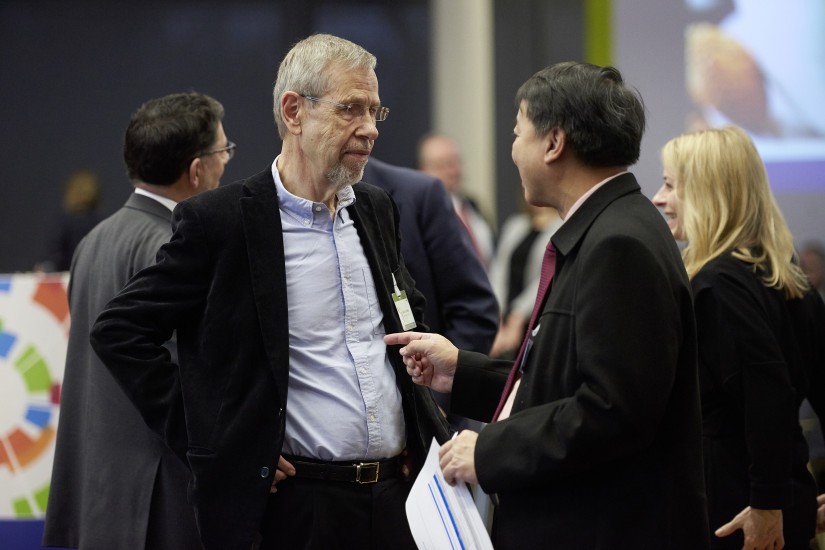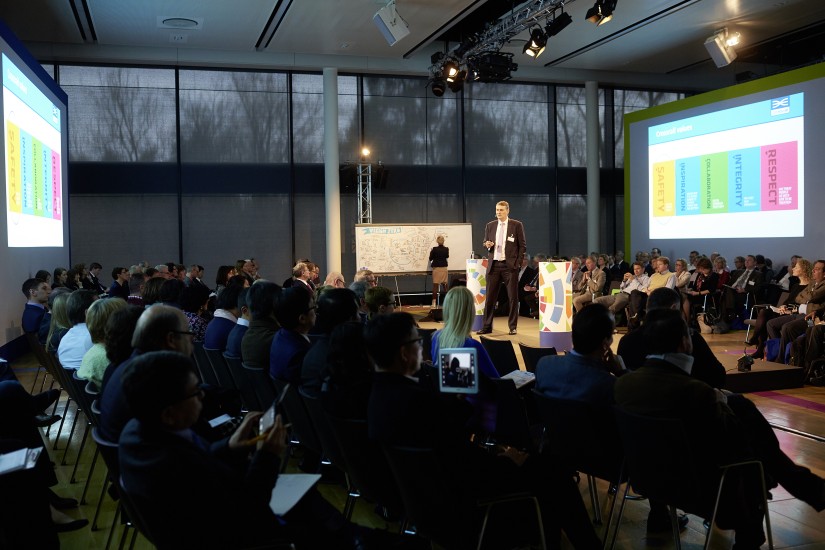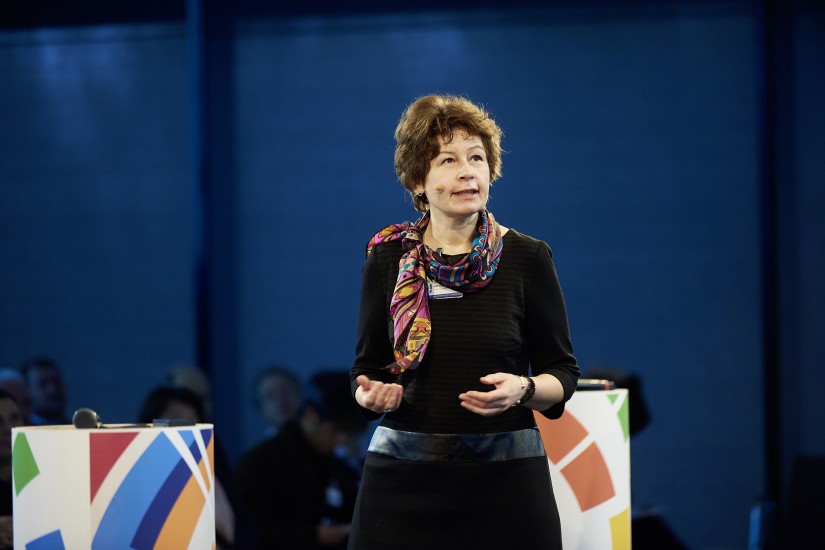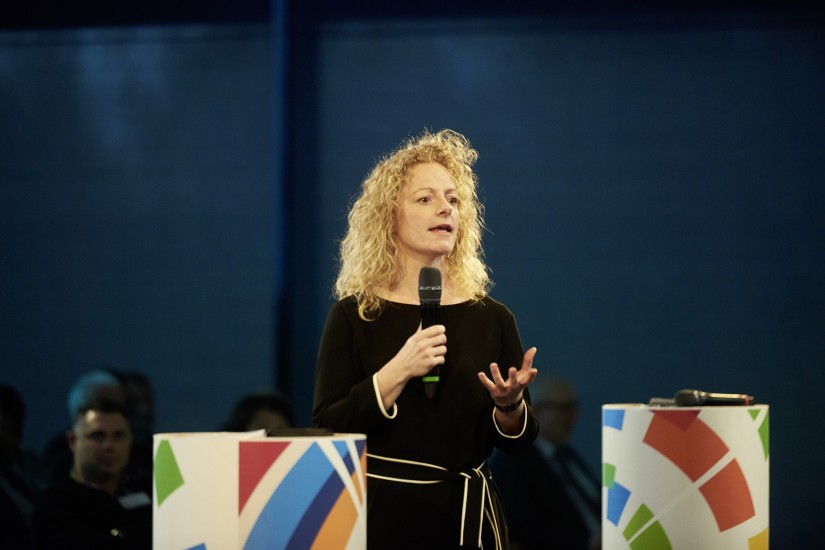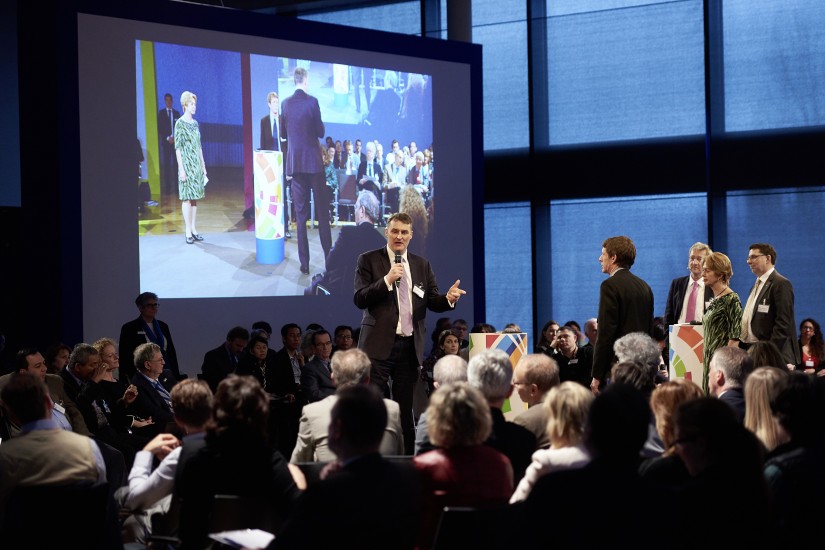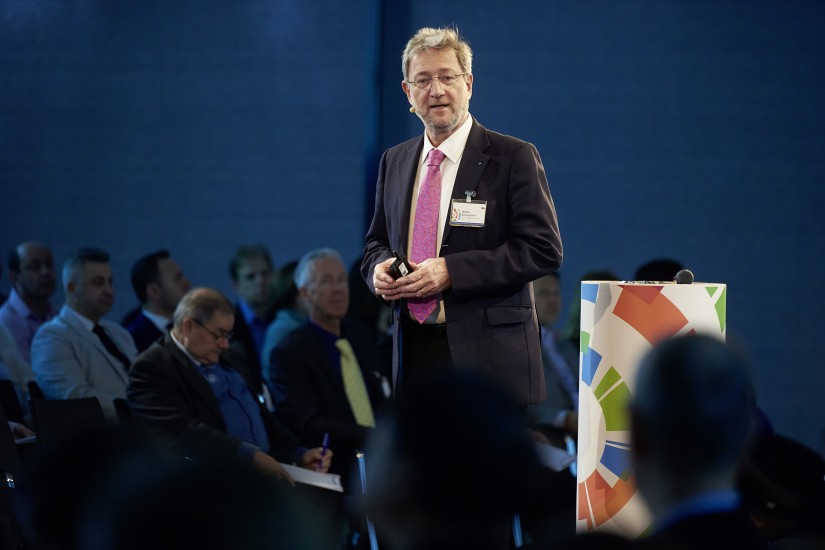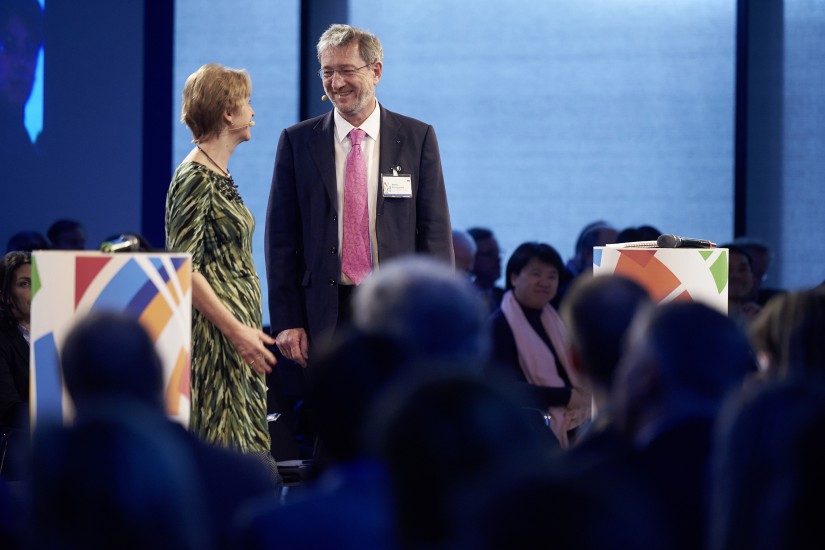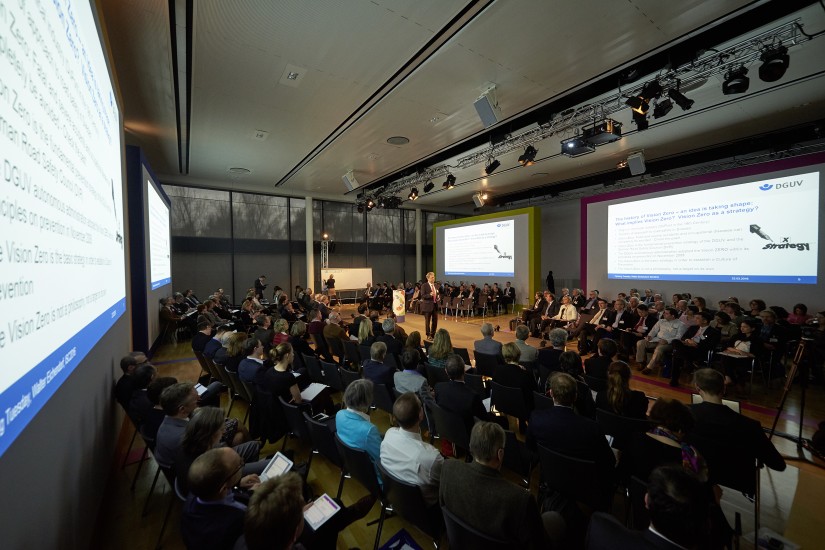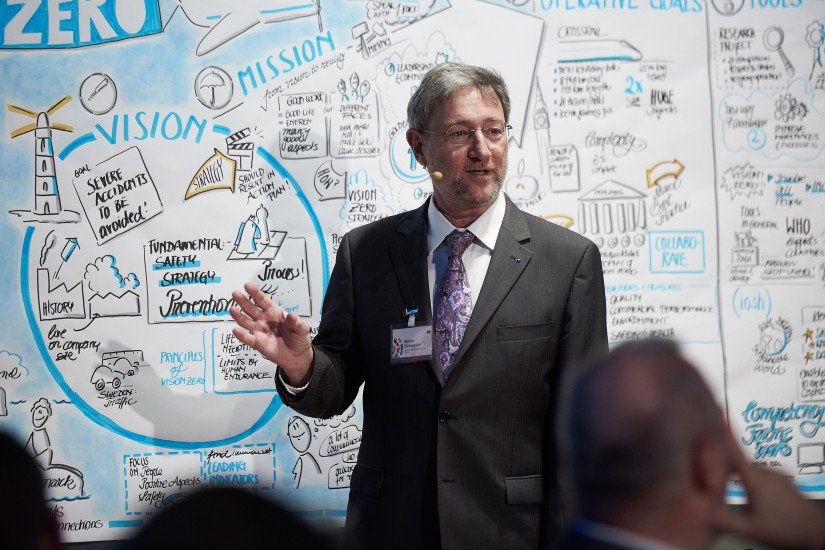T1 – Vision Zero: from vision to reality
“We need a set of common headline indicators to implement the Vision Zero strategy”
Vision Zero – a world without serious and fatal work accidents and work-related diseases – is possible. But what needs to be done to make this vision a reality? This was discussed by the participants of the 4th International Strategy Conference on Safety and Health at Work in the first topic block. The various experts agreed: there are now several excellent measures and strategies which can be used to achieve Vision Zero. For example, the 7 Golden Rules to VISION ZERO developed by the International Social Security Association (ISSA). “It is important to bring the different strategies in line”, said Dr Walter Eichendorf, Deputy Director General of the DGUV. This was reiterated by Helmut Ehnes, Prevention Director of the German Social Accident Institution for the Raw Material and Chemical Industry and General Secretary of the ISSA Section on Prevention in the Mining Industry: “We must speak with one voice in order to achieve Vision Zero”.
“Zero accidents is not the principal goal of Vision Zero in itself, it is the conviction that the process and approach is correct and that the prevention of accidents and occupational diseases can be achieved!” explained Pete Kines from the Danish National Research Centre for the Working Environment. The contributors were also unanimous that Vision Zero is only possible if prevention is practised by everyone in the company from top management through to each individual employee. “Vision Zero isn’t about technical competencies but rather leadership and people’s commitment”, said Steve Hails from Crossrail Ltd. in the UK. “We have to establish a culture of prevention from the outset, even in kindergartens”, added Shelley Frost from the internationally-active Institution of Occupational Safety and Health (IOSH).
Dr Eichendorf announced that an important step on the road towards Vision Zero is the development of common headline indicators. These are to be developed with ISSA and the International Labour Organisation (ILO) prior to the next world congress in Singapore.
